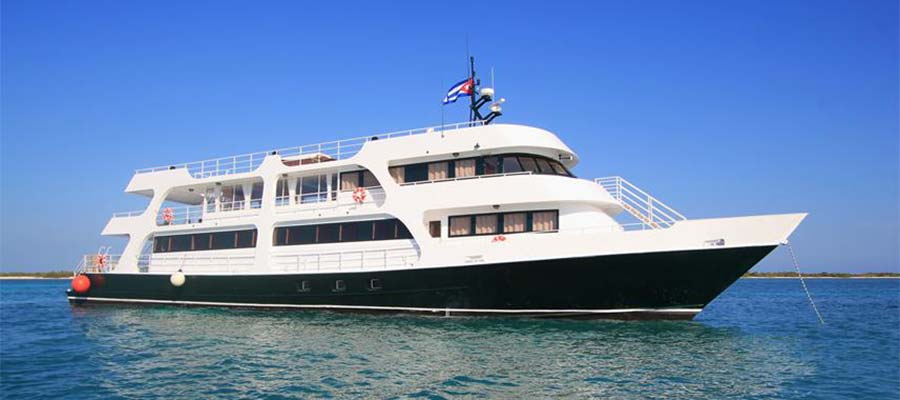Let's blow bubbles in the Queen's garden.
Anonymous
Discover Cuba Scuba Diving Liveaboards
All Star Cuba offers Blue Sanctuary workshops
- Diving in Cuba is now open to U.S. citizens -
Jardines de la Reina Marine Park (Gardens of the Queen) is home to the the third largest reef in the world. The park’s Blue Sanctuary sustainability management program has resulted in limited access by man. As a protected environment – underwater creatures including six species of sharks and colorful corals including those once thought to be lost – have been able to thrive and flourish. Fish grow to adulthood, including Goliath grouper and tarpon, among many other species. Only accessible by scuba diving liveaboard, Gardens of the Queen are one of the top dive liveaboard destinations in the world.
It is legal for Americans to travel to and dive in Cuba under our Blue Sanctuary program.
Divers tell us that Cuba’s Blue Sanctuary program provides an exceptional liveaboard diving experience closer to home. More importantly, it eliminates the need to travel half-way around the world to the Coral Triangle.
All Star Avalon
- A 7-night luxury dive liveaboard experience
- Departs Jucaro via Havana, Camaguey or Santa Clara Cuba* traveling to the Jardines de la Reina Marine Park (Gardens of the Queen)
- Dive sites only accessible via Blue Sanctuary-approved All Star Avalon scuba diving liveaboards
- Cabins each with large ocean-view windows (or port holes and additional storage), private bathroom, TV and temperature control
- Up to 22 dives including 2 night dives
- Unique topography – walls with tunnels, caverns and giant ledges
- Snorkel with endangered crocodiles
- Dive deck with warm water showers
- Underwater photographer / videographer captures your dive
- Cuban and international cuisine served family-style
- Excursions and eco adventures: a sunset watching cruise, touring lagoons and mangrove channels, birdwatching, snorkeling, feeding iguanas and endangered hutías
- Experienced, attentive crew



